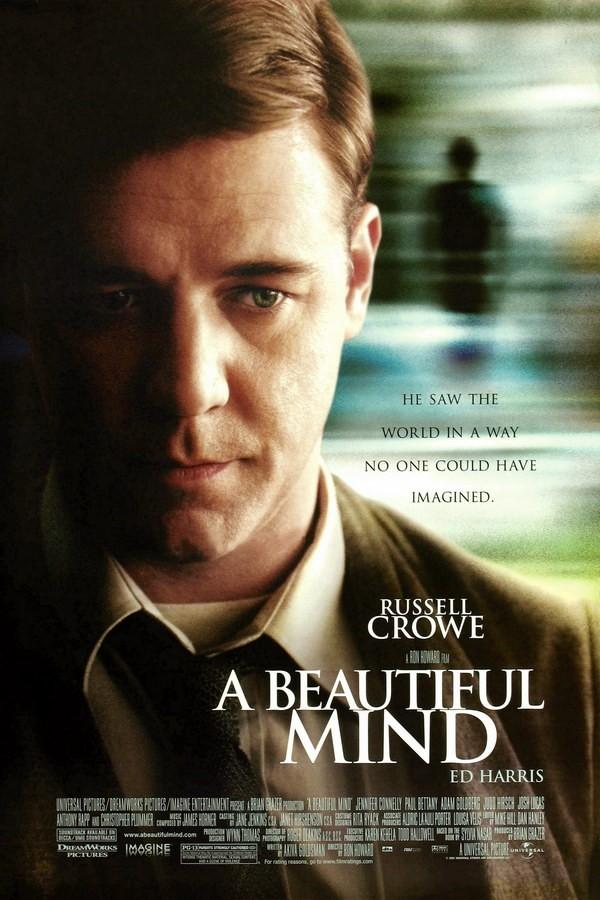Best Picture 2001: A Beautiful Mind melds stellar acting with a riveting story
February 24, 2016
When my math teacher played “A Beautiful Mind” in class as a “fun” post finals activity, I was expecting a snoozefest. What I got instead was not only a riveting story, complete with great acting and effects, but an inspirational message of a man determined to beat the odds.
Based on a true story, “A Beautiful Mind,” tells how mathematical genius, John Nash, faced his ultimate mental challenge to determine the difference between reality and illusion.
The 2001 film, directed by Ron Howard, is built off the biography written by Sylvia Nasar, Russell Crowe, Jennifer Connelly, Ed Harris, and Paul Bettany.
The story begins at Princeton in 1947, where Nash (Crowe) is one of many students striving to make an original contribution to the mathematical community. When he makes a breakthrough in game theory, his career seems to be on the rise, and in due time, he becomes a professor, a husband, and a code breaker for the government. A shocking discovery soon sends Nash through a whirlwind of events leaving him questioning everything he knows to be real.
Effects were skillfully used to take the viewers into Nash’s mind. By highlighting the patterns and codes he saw, his thought process was illuminated without disrupting the scene.
Crowe did an outstanding job portraying John Nash, adeptly mimicking his awkward, timid behavior. By the middle of the movie, much of the intensity and tension of the film was created solely through Crowe’s uncanny ability to capture Nash’s emotions.
The music also contributed to the overall emotional impact – lighthearded in the beginning to draw the viewer in, but intensifying as the movie continued.
To condense the fifty years that the movie sought to cover, the director skipped over periods of Nash’s life, which was in some cases a bit confusing. For example, his time spent with Alicia before he proposed seemed rushed, but from that point forward, Connelly made her role as Alicia notable, adding to the emphasis on how difficult life became for the family.
The dialogue was thoughtfully written, contrasting current events with earlier ones. For example, in his time as a graduate student focusing on only his work, his friend’s concern for him is later mirrored when Nash meets a young mathematician similar to the college version of himself. Their interaction was a nice tribute to his memory of his old friend and how Nash himself had matured.
Overall, “A Beautiful Mind” was an extremely worthwhile watch about how powerful one’s mind can be. Due to the violence and sexual content of certain scenes, the PG-13 rating suggests an older audience. However, “A Beautiful Mind” is a film everyone should see at some point in their lives to gain a unique perspective on facing challenges.










